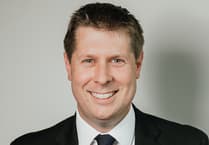Thousands of people in Gwent with ear, nose and throat (ENT) problems are likely to wait more than two years for treatment.
Aneurin Bevan University Health Board figures show pressure on ENT services is among the greatest on any of its departments.
The organisation has launched a new GP partnership to make sure the right patients are receiving hospital treatment.
The board met this week to discuss current performance levels, and noted ENT and ophthalmology, as well as trauma and orthopaedics are all likely to continue experiencing long waiting lists in the year ahead.
The Welsh Government, which runs the NHS in Wales, has a target for no patients to wait longer than a year for their first outpatient appointment – yet this has not been achieved nationally since it launched a planned care recovery plan in April 2022.
A health board report shows that in Gwent, more than 7,000 people will likely wait longer than 52 weeks for ENT treatment this coming year, and more than 3,000 will wait longer than two years.
The Local Democracy Reporting Service asked the health board to explain why planned care waiting lists for ENT treatments were so long.
In response, a health board spokeswoman said ENT is “one of our highest demand areas, with an extremely high volume of referrals received each year”.
“We must prioritise the most urgent cases first in order to balance our capacity against this continuous demand,” she explained.
A new “GP partnership” in the Aneurin Bevan health board area has been set up “in an effort to reduce these waiting lists”.
Through this system, a GP “works together with the ENT teams to assess the suitability of the referrals received and consider whether it would be more appropriate for some cases to receive care or guidance elsewhere”.
“Along with our new GP partnership approach, we will be providing additional clinical activity over the coming weeks to allow us to see some of our longest waiting patients,” the health board spokeswoman added. “We will also be working with the ENT service to produce a more sustainable model that considers how we can balance patient demand against alternative care pathways in order to future-proof the service.”




